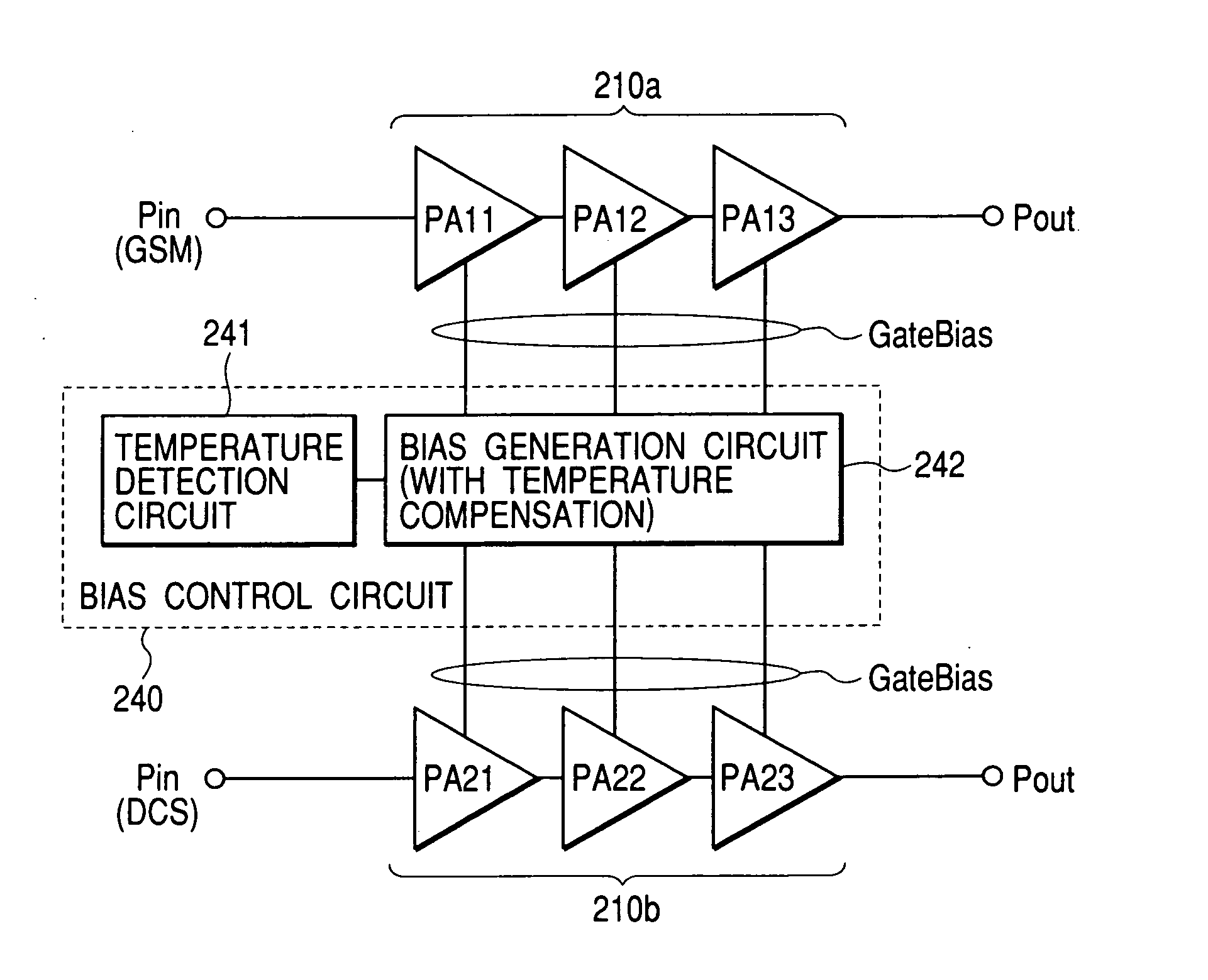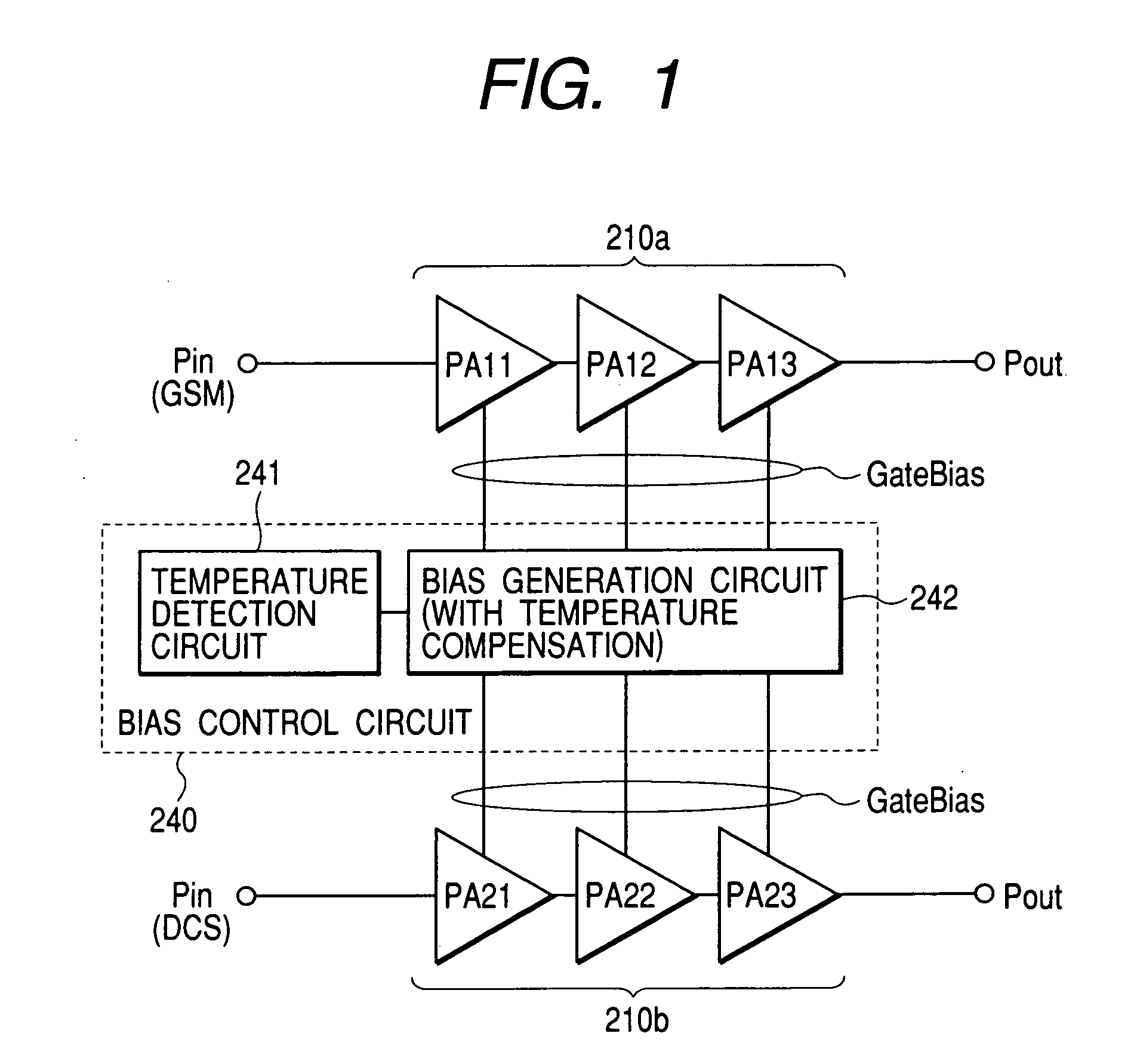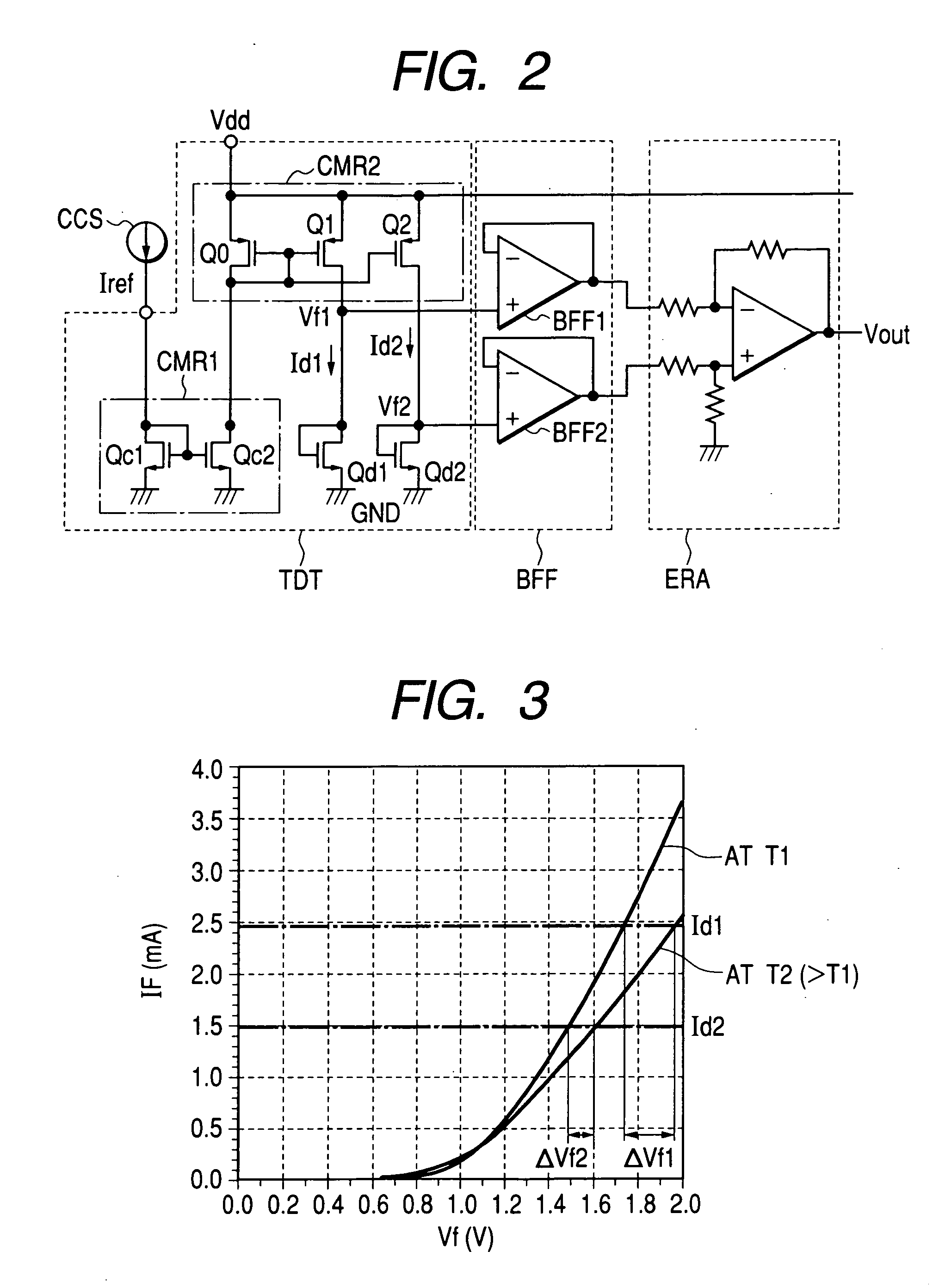High-frequency power amplification electronic part and wireless communication system
a technology of power amplifier circuit and electronic part, applied in the direction of amplifier combination, automatic tone/bandwidth control, gain control, etc., can solve the problems of power inordinately reduced at lower temperatures, increased noise at higher temperatures, and increased gain at higher temperatures. achieve the effect of constant gain of the power amplifier circui
- Summary
- Abstract
- Description
- Claims
- Application Information
AI Technical Summary
Benefits of technology
Problems solved by technology
Method used
Image
Examples
Embodiment Construction
[0025] Preferred embodiments of this invention will now be described with reference to the accompanying drawings.
[0026]FIG. 1 is a block diagram outlining a typical structure of a high-frequency power amplifier block of a wireless communication system embodying the invention. This embodiment is structured as, but not limited to, a dual-band communication system using GSM and DCS. FIG. 1 shows two power amplifier circuits making up the system and a bias control circuit serving to bias these amplifier circuits.
[0027] In FIG. 1, reference numeral 210a stands for a power amplifier circuit that amplifies an outgoing signal at 900 MHz on the GSM frequency band; 210b denotes a power amplifier circuit that amplifies an outgoing signal at 1,800 MHz on the DSC frequency band; and 240 represents a bias control circuit that generates bias currents to be fed to the power amplifier circuits 210a and 210b.
[0028] The power amplifier circuits 210a and 210b are each constituted by three amplifier ...
PUM
 Login to View More
Login to View More Abstract
Description
Claims
Application Information
 Login to View More
Login to View More - R&D
- Intellectual Property
- Life Sciences
- Materials
- Tech Scout
- Unparalleled Data Quality
- Higher Quality Content
- 60% Fewer Hallucinations
Browse by: Latest US Patents, China's latest patents, Technical Efficacy Thesaurus, Application Domain, Technology Topic, Popular Technical Reports.
© 2025 PatSnap. All rights reserved.Legal|Privacy policy|Modern Slavery Act Transparency Statement|Sitemap|About US| Contact US: help@patsnap.com



